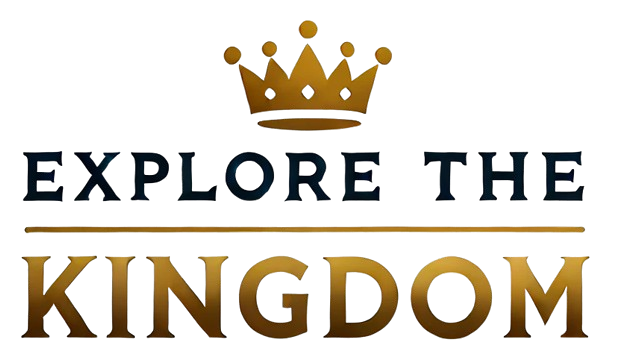Monarchies have been a prominent feature of human civilization for millennia, shaping societies, cultures, and political landscapes worldwide. From the majestic dynasties of ancient Egypt to the constitutional monarchies of today, the history of royal dynasties is marked by a series of ascents to power, periods of stability, and eventual declines. This article explores the rise and fall of various monarchies, examining the factors that contributed to their success and eventual downfall.
The Rise of Monarchies
Ancient Civilizations: The Birth of Royal Dynasties
The concept of monarchy can be traced back to some of the earliest civilizations. In ancient Egypt, Pharaohs were considered divine rulers, believed to embody the gods on Earth. The Old Kingdom (c. 2686-2181 BCE) saw the construction of the Great Pyramids, monumental structures that symbolized the power and authority of the Pharaohs. The belief in the divine right of kings established a model for future monarchies worldwide.
In Mesopotamia, city-states like Ur and Babylon were ruled by kings who wielded significant power. The Code of Hammurabi, one of the earliest written legal codes, exemplifies how monarchs sought to establish order and governance. These early monarchies laid the groundwork for centralized power, where a single ruler governed with authority.
The Classical Era: Expansion and Conquest
As civilizations advanced, so did the complexity of their monarchies. The rise of empires such as the Persian Empire under Cyrus the Great and the Macedonian Empire under Alexander the Great showcased how monarchs could expand their territories through military conquest. These rulers often combined political acumen with military prowess, establishing extensive realms that brought diverse cultures under their control.
In Europe, the fall of the Roman Empire marked the beginning of feudalism, a system where local lords held power over land and people. The Carolingian Empire, founded by Charlemagne in the 8th century, exemplified the merging of tribal leadership with monarchical authority. Charlemagne’s reign is often heralded as a turning point in European history, as he sought to unite Western Europe under a single Christian empire.
The Middle Ages: Consolidation of Power
The Middle Ages saw the establishment of more structured monarchies. The Magna Carta of 1215 in England marked a significant shift in the balance of power between the monarchy and the nobility. This document laid the foundation for constitutional governance, limiting the king’s powers and granting certain rights to subjects. As a result, kingship began to evolve, with monarchs increasingly viewed as accountable to their subjects.
In France, the Capetian dynasty emerged as one of the longest-lasting royal families in history. From Hugh Capet in 987 to the end of the monarchy in 1792, the Capetians expanded their influence, establishing a centralized state that would dominate French politics for centuries. The Hundred Years’ War between England and France further solidified the role of monarchies in national identities as both nations rallied around their respective kings.
The Fall of Monarchies
Economic Decline and Revolutions
Despite their power, monarchies were not immune to decline. The 17th and 18th centuries saw significant social and economic changes that challenged traditional monarchies. The rise of the middle class, fueled by commerce and trade, led to a demand for greater representation and influence in governance. Financial crises and widespread discontent in France resulted in the French Revolution of 1789, which marked the end of the Bourbon monarchy.
The revolution was driven by Enlightenment ideals emphasizing liberty, equality, and fraternity. King Louis XVI’s inability to address the economic hardships faced by his subjects ultimately led to his execution and the establishment of the First French Republic. The fall of the French monarchy sent shockwaves throughout Europe, inspiring revolutionary movements in countries like Russia and Austria.
The World Wars and the Decline of Empires
The two World Wars in the 20th century significantly altered the political landscape of Europe and beyond. The aftermath of World War I saw the dismantling of several monarchies, including the Russian, Austro-Hungarian, and Ottoman Empires. The Bolshevik Revolution of 1917 resulted in the execution of Tsar Nicholas II and his family, marking a definitive end to centuries of Romanov rule.
In Germany, the abdication of Kaiser Wilhelm II in 1918 signaled the collapse of the German Empire. The Treaty of Versailles imposed harsh penalties on Germany, leading to widespread disillusionment and economic hardship, ultimately paving the way for the rise of Adolf Hitler and the Nazi regime.
The dissolution of empires and the rise of nationalism further contributed to the decline of monarchies. Countries that once thrived under imperial rule sought independence and self-governance, leading to the establishment of republics and constitutional democracies. The transition was often tumultuous, marked by civil wars and revolutions.
Modern Monarchies: Adaptation and Survival
Despite the decline of absolute monarchies, many royal families have adapted to the changing political landscape. Constitutional monarchies have become prevalent in countries like the United Kingdom, Sweden, and Japan, where the monarch’s powers are limited by law or a constitution. These monarchies often symbolize national unity and continuity while allowing for democratic governance.
The monarchy has weathered numerous challenges in the United Kingdom, including two World Wars, economic crises, and changing social norms. The reign of Queen Elizabeth II, which lasted from 1952 until her passing in 2022, epitomized the monarchy’s ability to modernize while retaining its traditions. The royal family has embraced modern media and public relations, allowing them to remain relevant in the contemporary world.
However, the relevance of monarchies continues to be debated. In countries like Spain and Belgium, royal families face scrutiny over their roles and expenditures. The rise of republican sentiments and calls for abolishing monarchies persist, particularly among younger generations who prioritize egalitarian principles.
Conclusion
The history of monarchies is a fascinating tapestry woven from the threads of power, culture, and societal change. From their divine origins in ancient civilizations to modern adaptations, royal dynasties have shaped human history. While many monarchies have fallen due to economic decline, revolutions, and the rise of democratic ideals, others have managed to survive and evolve, reflecting the complex relationship between rulers and the ruled.
As we look to the future, the fate of monarchies remains uncertain. Globalization, technological advancements, and shifting societal values will continue to test royal families’ relevance and role. Whether they adapt or decline, monarchies’ stories will remain an integral part of our understanding of history and human governance.


